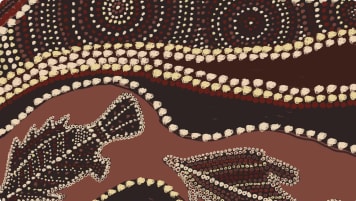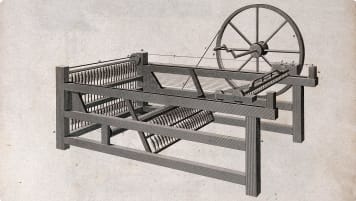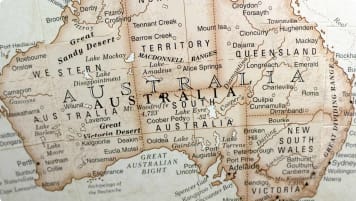Uncovering the ancient history of Aboriginal Australia
For small group escorted tours of Australia in Queensland, Victoria, New South Wales, South Australia, Tasmania, Western Australia and the Northern Territory a guide on Aboriginal culture for mature and senior travellers.
4 Mar 21 · 12 mins read
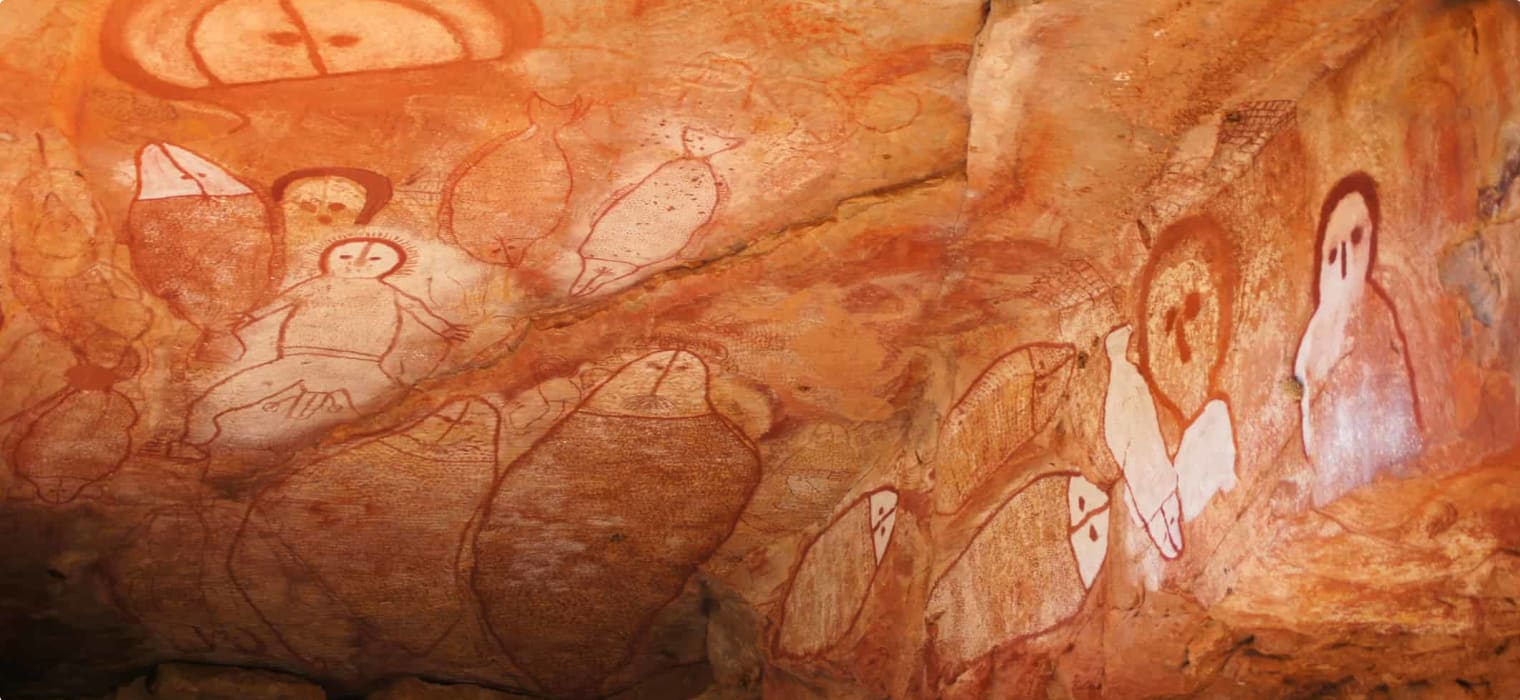
Uncovering the ancient history of Aboriginal Australia
… from time immemorial, we believe as Aboriginal people, Australia has been here from the first sunrise, our people have been here along with the continent, with the first sunrise. We know our land was given to us by Baiami, we have a sacred duty to protect that land, we have a sacred duty to protect all the animals that we have an affiliation with through our totem system.
Recalled Jenny Munro of the Wiradjuri nation in a 2007 interview . Though referring specifically to stories associated with her own people, her comments reflect a belief shared across indigenous Australian Aboriginal groups that ‘we have always been here’, Australian history told through traditional learning and oral histories of Aboriginal stories.
Over the past 80 years, the knowledge of Aboriginal people has been confirmed by science, archaeology, archaeological evidence and history. Though debate ranges over the precise time of arrival, scientists now believe that Aboriginal people have been in Australia for between 50,000 and 120,000 years, supported by Aboriginal artefacts from examined archaeological site (s) and the evidence of Aboriginal occupation from the even the earliest colonial explorers journals often collecting stone artefact as they travelled initially eastern Australia. Even the earlier timeframe of 50,000 would put the arrival of Australian aboriginal people in Australia shortly after early humans left Africa, making Australian aboriginal history among the most ancient cultures on earth.
It is generally held that first Aboriginal people arrived in Australia via insular South-East Asia, in a period before rising sea levels, when there were more dry land bridge connections between the islands of South East Asia. Boats would have been used for some of the migration, including between Bali and Lombok and Timor and Australia. 35, 000 years ago all of the Australian continent, including Tasmania, had been settled by the Aboriginal Australian people.
Though the ancient origins of Aboriginal civilisation are today well known, the struggles of scientists, archaeologists, and Aboriginal people to have this longevity understood are less known. The uncovering of the ancient origins of Aboriginal society by archaeologists and scientists is deeply entwined with the struggle of Aboriginal people to have their land rights recognised in the second half of the 20th century.
The first white settlers – failing to understand a people they dismissed as ‘primitive’ hunter-gatherers – declared AustraliaTerra Nullius (a Latin expression meaning ‘no man’s land’). Proving the longevity of Aboriginal presence on the land was a powerful challenge to the doctrine of Terra Nullius, which remained in Australian law until the 1992 Mabo decision awarded land rights to indigenous Australians.
Today, scientists and archaeologists continue to find older and older archaeological evidence of Aboriginal civilisation in Australia. New evidence and reassessments of old evidence – including Bruce Pascoe’s best-selling Dark Emu – are revealing the diversity of Aboriginal society, challenging old myths that all Aboriginal peoples were hunter-gatherers.
This article traces the history of some of the key archaeological findings that have transformed our understanding of Aboriginal civilisation on the Australian continent.
Mungo Man and Mungo Lady:
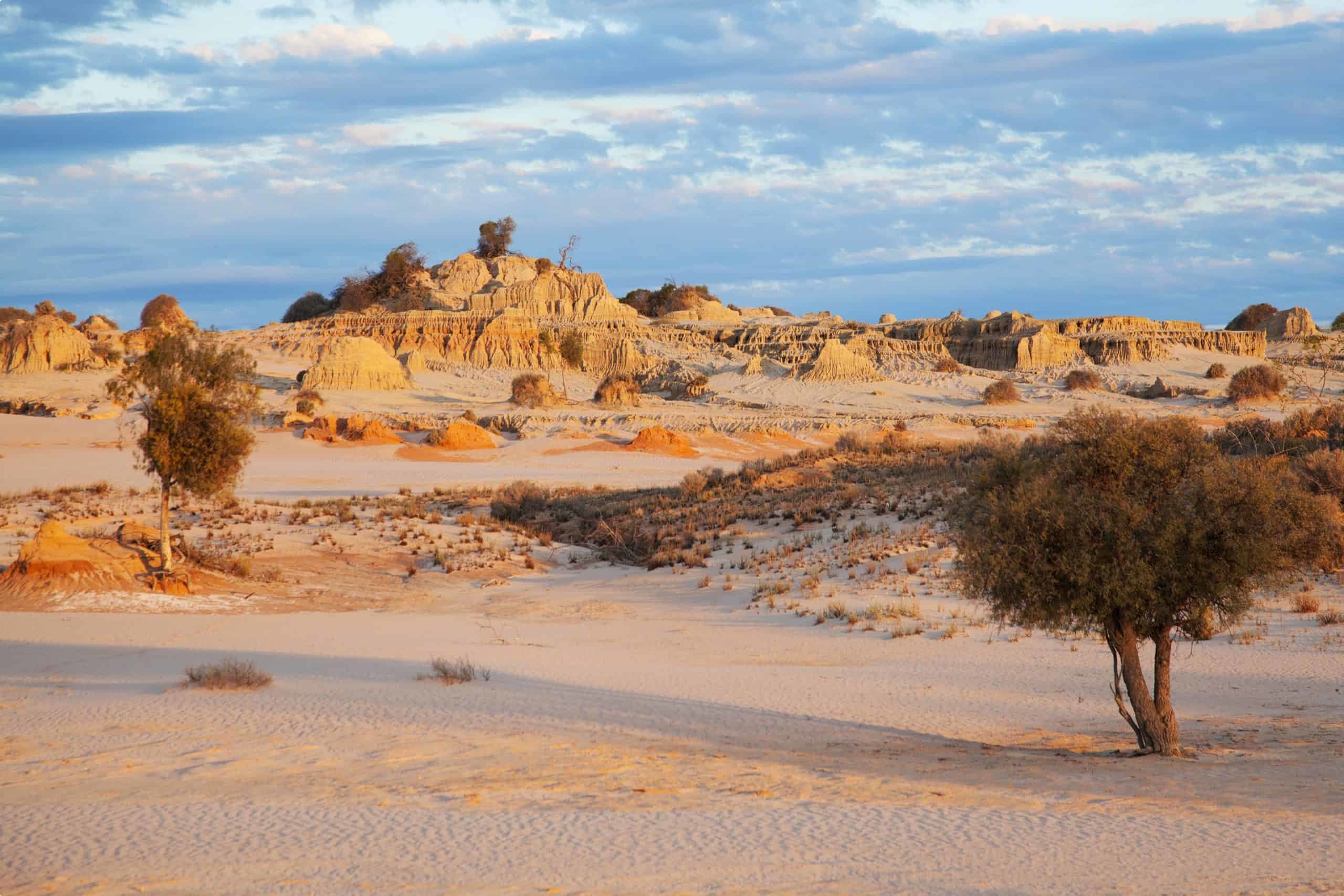
In 1960, even the most progressive archaeologists believed that Aboriginal settlement in Australia dated back only a few thousand years. In 1957, John Mulvaney – then Australia’s only trained archaeologist – ingeniously used radiocarbon testing to provide evidence of human habitation dating back 5000 years. This number was clearly inadequate, given the existence of Aboriginal oral traditions, recorded in the late 19th century that clearly mapped onto geological evidence of the ending of the last glacial period, indicating a culture and civilisation that had been continuous since the last Ice Age.
Soon afterwards, Mulvaney found evidence in Northern Queensland dating habitation back 14, 000 years – only to be told by the ABC that the information was of ‘no interest’ to the public!
The watershed moment would prove to be the discovery of human remains – later known as ‘Mungo Lady‘ – by the geologist Jim Bowler in 1968. The son of an immigrant from the Blasket Islands, Ireland, Bowler worked as a potato farmer in Gippsland, Victoria, for ten years after finishing school. Developing a fascination for the soil, he went on to study earth sciences at the University of Melbourne in his late 20s. By the late 1960s, Bowler had begun to find shell middens and other evidence indicating that human habitation in Australia was at least 25, 000 years old.
In 1968, Bowler discovered bones emerging from eroded dunes around Lake Mungo, in the remote south-west of New South Wales. Part of the Willandra Lakes Region, the area had been shaped by ancient geological processes. Around 32 million years ago, it was flooded by sea. Sea levels crept back over millions of years, until the coast of Australia reached its current position, around 2-6 million years ago. Around 150, 000 years ago, the Willandra Lakes formed, filled with water from mountains to the east. The lake dried out at the end of the Ice Age, around 18, 000 years ago.
The year after his discovery, Bowler brought the archaeologists John Mulvaney and Rhys Jones to the site. With the help of colleagues at the Australian National University (ANU), they discovered that the remains were of a young woman. It became clear that she had been ritually buried: cremated, then crushed, burned, and buried in the lunette (eroded dune).
In 1974, Bowler made the discovery of Mungo Man, a man of about 50, who had likewise been ritually buried, placed on his back with hands crossed in his lap and his body decorated in red ochre.
Eventually Mungo Man and Mungo Lady were dated as having lived around 40,000 to 42,000 years ago. They are among the oldest remains of modern humans (Homo sapiens) found anywhere in the world, and are the most ancient evidence of ritual burial – indicating spirituality, cultural practice, and a complex and abstract worldview.
Mungo Man and Mungo Lady would have lived in a fertile environment, when a full lake supported an ecosystem of fish, yabbies, and shellfish, while reed beds and eucalyptus by the side of the lake attracted waterbirds, amphibians, mammals and reptiles. Mungo Man’s teeth – which indicated a diverse diet – and advanced age of fifty further showed that they lived in a prosperous society.
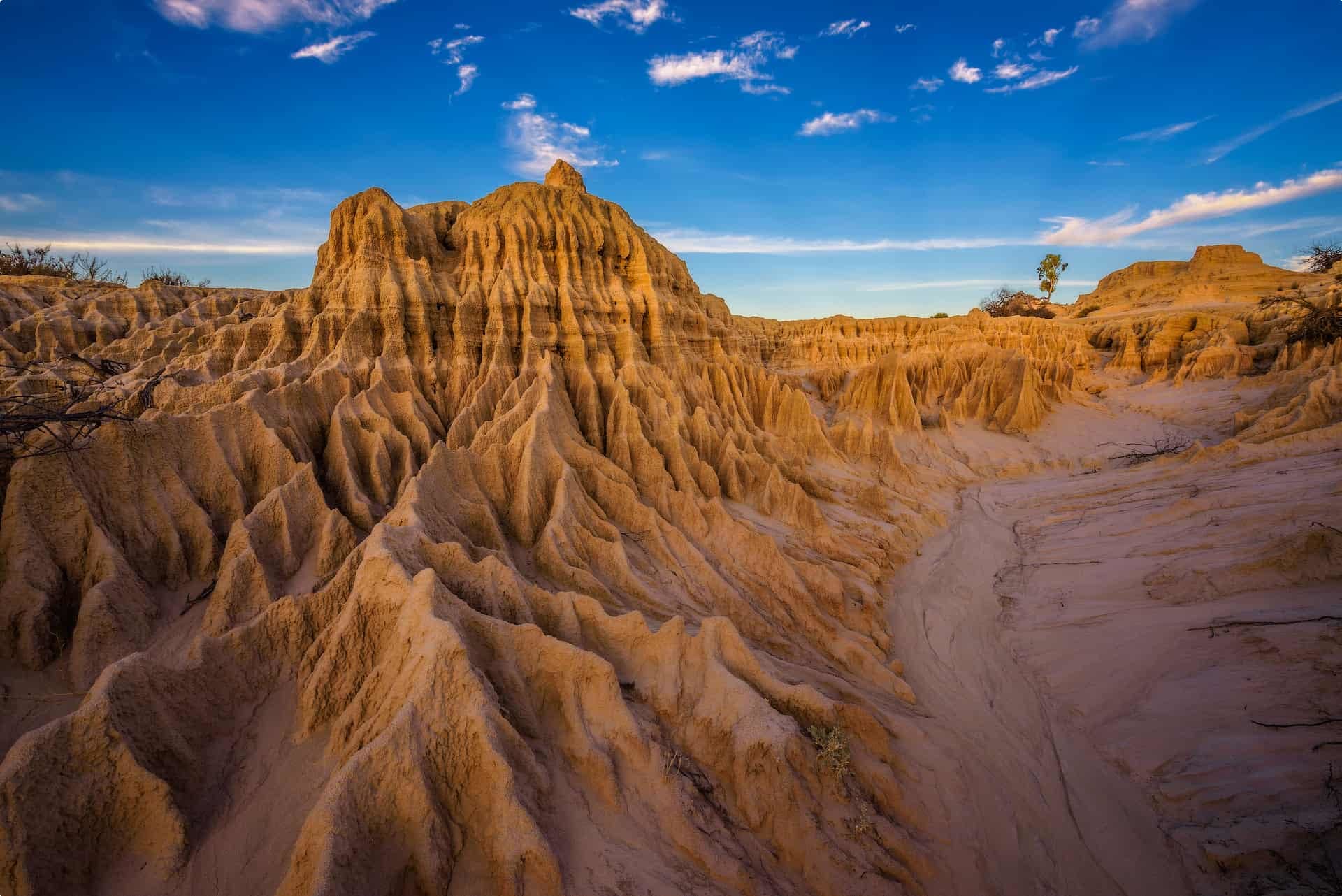
The findings revolutionised our understanding of early human migration, revealing that humans had arrived in Australia much earlier than scientists had then thought. Moreover, the discovery also occurred in a time of political and social ferment for Aboriginal people, in which civil rights and land rights movements were being fought after long years of repression and discrimination. The discovery provided powerful evidence to be used in land rights claims, and furthered the pride of indigenous communities. “You have been here 200 years, we for 40,000,” read signs protesting the 1988 Australia Day celebrations.
At the same time, the attitude of scientists and researchers often revealed a lack of respect for the traditional owners of the land. The remains of both Mungo Man and Mungo Lady were taken to Canberra, without consultation of the Paakantji, Ngyiampaa, and Mutthi Mutthi peoples of the area. For many Aboriginal people, the removals echoed a long history in which settlers ‘harvested’ skeletons (often by plundering grave sites) for display in museums in the United States and Europe, in many cases to ‘prove’ that indigenous people were lower on the evolutionary scale than Anglo-Saxons. The deep connection of Aboriginal people to their land, expressed through Dreamtime oral traditions, makes the removal of Mungo Man and Mungo Lady a particularly devastating loss for Australian aboriginal history.
In turn, scientists asserted the universal value of Mungo Man and Mungo Lady for science and national identity. Digs at Lake Mungo were met with protests from local people, and from the late 1970s, an embargo.
In 1989, the parties agreed to a conference at Lake Mungo, in which a compromise was met, in which both would respect the others interests in an collaborative approach. Further human remains have since remained in situ. In 1992, Mungo Lady was returned to Lake Mungo.
Still, Mungo Man remained in Canberra, despite the campaigns of the Paakantji, Ngyiampaa, and Mutthi Mutthi peoples. In 2014, a widely publicised editorial by Jim Bowler – who had a deep respect for Aboriginal spiritual belief drawn from his own Celtic-inflected Catholicism – called for the remains to be moved back.
The campaign would prove successful, and in 2017, Mungo Man was returned to his home, in an event marked by a traditional ceremony and burial.
The discovery of Mungo Lady and Mungo Man paved the way for the Willandra Lakes to be declared a UNESCO World Heritage Area. In 1979, it was made a New South Wales National Park, and was added to the World Heritage List in 1981 – one of the first World Heritage sites in Australia – and one of only four in Australia (along with the Tasmanian Wilderness, Uluru, and Kakadu National Park) recognised for both their cultural and natural value.
Budj Bim Cultural Landscape, Victoria
If Mungo Lady and Mungo Man provided powerful evidence of the longevity of Aboriginal civilisation in Australia, the Budj Bim Cultural Landscape in Victoria is a powerful testament to the diversity of that civilisation. A complex aquaculture network, skilfully designed to catch the kooyang, or short-finned eel, the Cultural Landscape challenges stereotypes that all Aboriginal peoples were nomadic hunter-gatherers.
The Budj Bim Cultural Landscape is located within the traditional country of the Gunditjmara Aboriginal people, in south-western Victoria, north of the Great Ocean Road. The site centres around the dormant volcano Budj Bim, formerly known as Mount Eccles.
Budj Bim was formed by volcanic eruptions around 27,000 years ago. The volcano erupted several times, most recently around 7, 000 years ago, during which lava spread over 50 kilometres to the south, forming a network of lakes, ponds, and swamps – including Tae Rak (Lake Condah) and the Condah Swamp – rich in aquatic life.
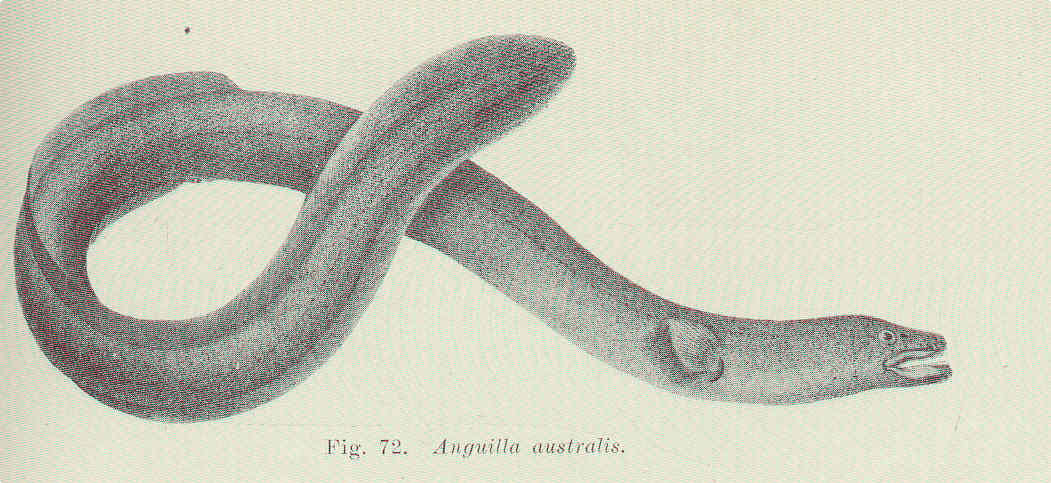
From this, the Gunditjmara people created a complex set of eel traps, drawing upon their knowledge of the rise and fall of water levels, and of the geologic processes that shaped them. They dug shallow channels – some up to 200 metres long – into the rock, and built weirs and dams out of volcanic rock. By controlling the water, they were able to systematically trap, store and harvest kooyang. The Gunditjmara people also constructed long eel baskets, made of river reeds and steel grass, to regulate and trap the eels according to their size. Eels were kept fat in holding ponds, and smoked in the hollows of large trees.
As UNESCO writes, ‘The highly productive aquaculture system provided a six millennia-long economic and social base for Gunditjmara society.’ A valuable commodity, the eels were traded with other Aboriginal language groups, bringing prosperity to the Gunditjmara peoples. There is evidence of permanent stone dwellings near the traps, indicating that a village was set up nearby – powerfully busting the myth that all Aboriginal people were nomadic hunter-gatherers.
The Budj Bim Cultural Landscape is entwined with the cultural traditions of the Gunditjmara people, passed down through the generations by oral history and cultural practice. Budj Bim figures heavily in the Gunditjmara creation story. Thirty thousand years ago, their ancestors watched the eruption of the Budj Bim volcano, where the Ancestral Being, Budj Bim (‘Big Head’) transformed himself into the landscape. The Gunditjmara – like other Aboriginal peoples – have what UNESCO refers to as a ‘deep time’ conception of their society, which refers ‘to the idea that they have always been there’, an important part of indigenous australians history.
The campaign to have the Budj Bim Cultural Landscape listed as a UNESCO World Heritage site began in 2002. Raising knowledge of the importance of the site, the Gunditj Mirring Traditional Owners Corporation succeeded in having Budj Bim listed on the Australian Heritage Register in 2004.
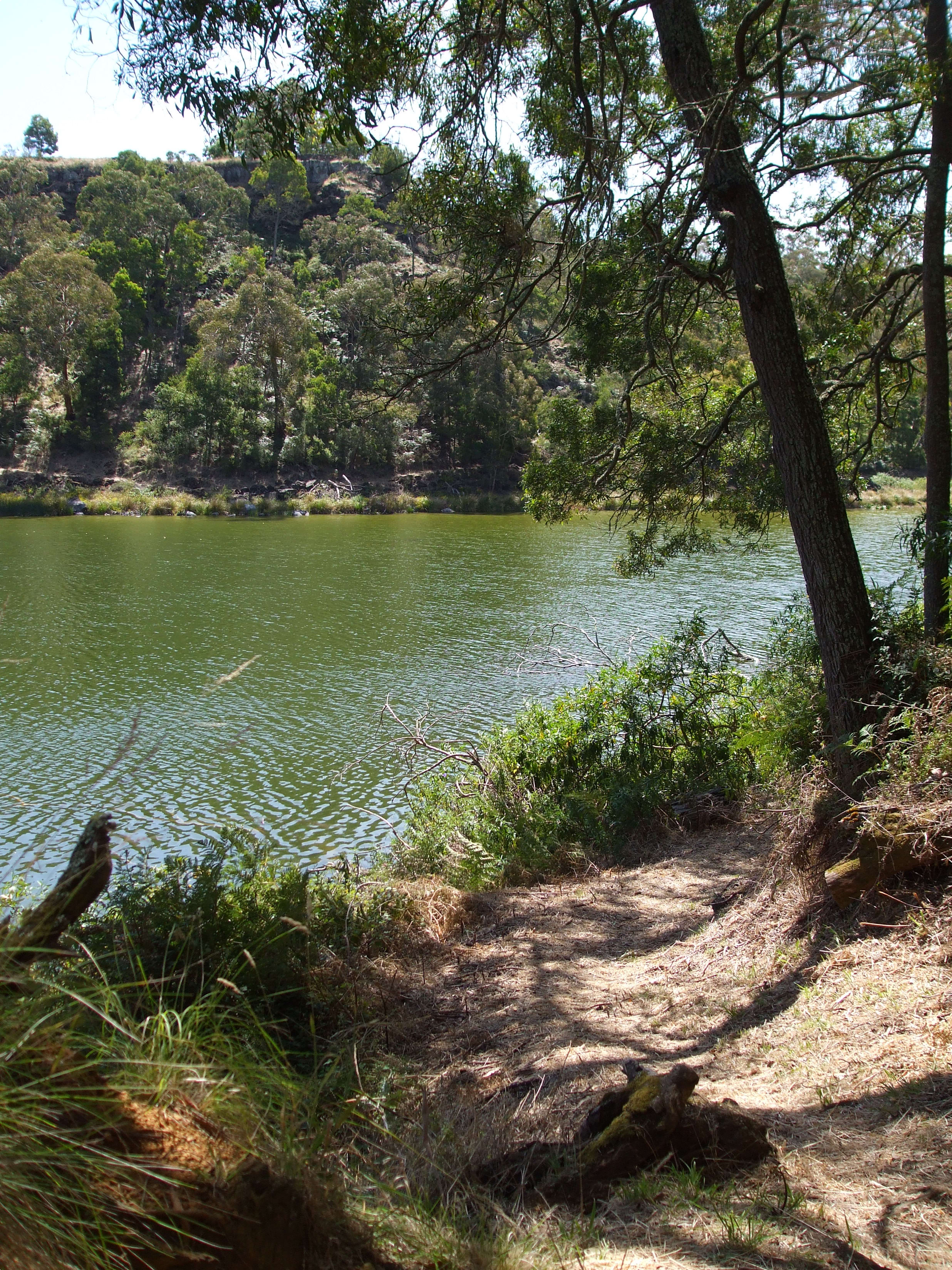
With the support of state and federal governments, Gunditjmara traditional owners prepared a report detailing the archaeological and cultural importance of the site. It was presented to the 43rd session of the World Heritage Committee in Baku, Azerbaijan, in June-July 2019. Awarded World Heritage Status, the site joins over twenty other Australian locations on the list.
120,000 years?
Since the discovery of Mungo Man and Mungo Lady, the date of first arrival of humans on the Australian continent has been pushed back further and further by new scientific discoveries. Immediately after the discovery, consensus was that the first Australians reached the continent around 40,000 years ago. This idea was given support by the fact that a number of further sites found around Australia – including Devil’s Lair, south of Perth, and hearths found within clay terraces on the Upper Swan River – dated at around 37,000 – 40,000 years ago. However, this ‘plateau’ coincided with the limits of radiocarbon dating, suggesting to archaeologists such as Rhys Jones that the initial arrival might be much older.
Excavations led by Jones at the Madjedbebe rockshelter in Kakadu, Northern Territory in 1989, suggested that there was evidence for human occupation in Australia 60-50 thousand years ago. Questioned by many archaeologists at the time, subsequent investigation from 2012 to 2015 by University of Queensland researchers used radiocarbon dating to suggest that the area was settled 65, 000 years ago – suggesting that humans reached Australia long before Homo sapiens arrived in Europe (45, 000 years ago).
As historian Billy Griffiths points out in Deep Time Dreaming: Uncovering Ancient Australia, the arrival of humans to Australia is of international importance for understanding human prehistory. Since the 1980s, archaeologists have believed that our ancestors, modern humans, migrated by foot out of Africa in a single exodus around 70-80,000 years ago, passing through the Middle East and Asia to contemporary Indonesia. But unlike earlier humanoids, which had made the same journey, homo sapiens was able to go further, making the 100 kilometre boat journey to Sahul (the ancient continent linking Australia, Tasmania and Papua New Guinea, before the rising sea levels to their current point).
For psychologist and archaeologist William Noble and Iain Davidson, the move to Australia is the ‘earliest evidence of modern human behaviour’. The construction of boats and navigation of the seas is the earliest moment in prehistory involving a level of language ability, navigational skill, and technological capacity that we can regard as distinctively human. To ask when humans reached Australia is almost to ask when humans became human.
Even more recently, extensive archaeological research in southern Victoria has suggested that people might have lived in Australia for 120, 000 years – twice as long as the broadly accepted timeframe for human habitation. The research was presented to the Royal Society of Victoria by a group of scholars, including Jim Bowler, discoverer of Mungo Lady and Mungo Man.
Using thermal luminescence analysis, they studied blackened stones that indicated human usage of fire. The results – though not entirely conclusive – indicated that they were from a designated ‘place of fire’, with stones collected and ‘heated in a situation reminiscent of a hearth.’
Though the researchers were cautious in their conclusions, the study opens up the possibility of indigenous habitation going back 120, 000 years. Whether this is proved further or not, it is clear that Australia’s first people have a long and ancient tie to their land.

Odyssey Traveller visits a number of these important sites – incuding Lake Mungo and the Budj Bim Cultural Landscape – as part of our new tour of the Southern States of Australia. Focusing on New South Wales, Victoria, and South Australia, our tour gets away from Sydney, Melbourne and Adelaide and casts these states in new light, exploring the little-known places where the three states meet.
Our tour of Southern Australia begins in Adelaide. The trip then heads to the historic shipping town of Port Fairy on the Southern Ocean coastline, stopping for a night in Mount Gambier on the way. The following day, we enjoy a day tour of the Budj Bim Cultural Landscape, learning about Aboriginal culture and aquaculture with a local tour guide, well versed in indigenous australians history.
Following this, we head further into central Australia, visiting the Naracoorte Caves Park, a UNESCO site home to the fossils of ancient megafauna – recognisable wildlife, such as kangaroos, lions and wombats, on a grand scale. Our southern Australia tour then heads further into the Australian outback, visiting the spectacular scenery of the Willandra Lakes, home to Mungo Lady and Mungo Man. From here, our Australia tour heads to the Murray River town of Mildura, where we enjoy a short paddle steamer trip, before we head to the quintessential outback city of Broken Hill. From Broken Hill, our tour heads back to South Australia, visiting the railway centre of Peterborough and the small town of Burra.
Travellers with an interest in learning more about the Aboriginal heritage of Australia may want to check out our other outback Australia tours, which include visits to the important cultural site of Wilpena Pound on our tour of the Flinders Ranges; to ancient rock art in the Kimberley, Western Australia; and to the Brewarrina Fish Traps in outback Queensland.
Every Odyssey guided tour is designed especially for mature and senior travellers, who want an authentic and informed experience of their destinations. Our tours aren’t the typical tourism Australia holiday – Blue Mountains, the Great Barrier Reef, and the penguin parade on Port Phillip Island. Instead, we pride ourselves on getting of the beaten path and making you think about Australia and New Zealand in new ways. We explore the trading history of the Victorian colony, view Arts and Crafts mansions in the South Australian Adelaide Hills, and learn about the emergence of Australia‘s primary industries of mining and agriculture on our tour of Outback Australia.
We hope that – with the current easing of coronavirus restrictions by both the federal government and Australian state and territory governments – interstate travel within mainland Australia and Tasmania will resume soon, allowing for our tour of Australia‘s southern states to commence in the second half of 2020.
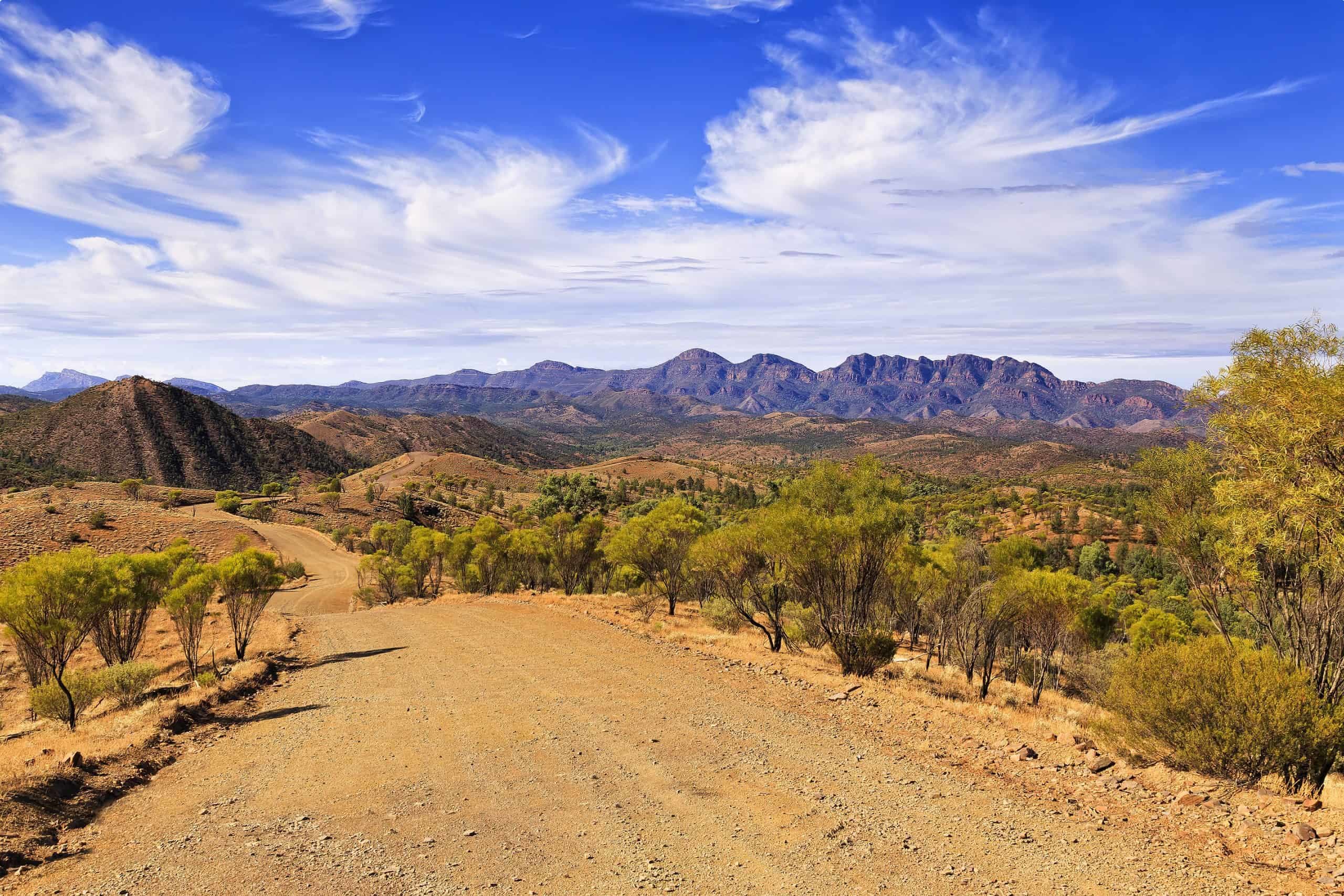
Articles about Australia published by Odyssey Traveller:
- The Kimberley: A Definitive Guide
- Aboriginal Land Use in the Mallee
- Understanding Aboriginal Aquaculture
- Mallee and Mulga: Two Iconic and Typically Inland Australian Plant Communities (By Dr. Sandy Scott).
- The Australian Outback: A Definitive Guide
For all the articles Odyssey Traveller has published for mature aged and senior travellers, click through on this link.
External articles to assist you on your visit to Australia:
- UNESCO: Budj Bim Cultural Landscape and Willandra Lakes Region
- Defining Moments: Mungo Lady
- Finding Mungo Man: the moment Australia’s story suddenly changed
- A 42,000-Year-Old Man Finally Goes Home
- Budj Bim Cultural Landscape
- Ancient Indigenous aquaculture site Budj Bim added to UNESCO World Heritage list
- Fish traps and stone houses: New archaeological insights into Gunditjmara use of the Budj Bim lava flow of southwest Victoria over the past 7000 years
- ‘A big jump’: People might have lived in Australia twice as long as we thought
We acknowledge Aboriginal and Torres Strait Islander peoples as the First Australians and Traditional Custodians of the lands where we live, learn and work. We pay our respects to Elders past, present and emerging.
Related Tours

days
Mar, May, Aug, Sep, Oct +2Small group tour of World Heritage sites and more in the Southern States of Australia
Visiting New South Wales, South Australia
Discover the World Heritage Sites of the southern states of Australia travelling in a small group tour. A journey of learning around the southern edges of the Murray Darling basin and up to the upper southern part of this complex river basin north of Mildura. We start and end in Adelaide, stopping in Broken Hill, Mungo National Park and other significant locations.

14 days
May, Jun, Jul, Aug, SepSmall group tour of Australia's Kimberley
Visiting Western Australia
Escorted small group tour of the Kimberley. We explore and visit The Bungles, Bell Gorge, Mitchell plateau & Halls Creek in the dry season. Amazing landscapes intertwined with Aboriginal communities resident more than 45,000 years.
From A$15,390 AUD
View Tour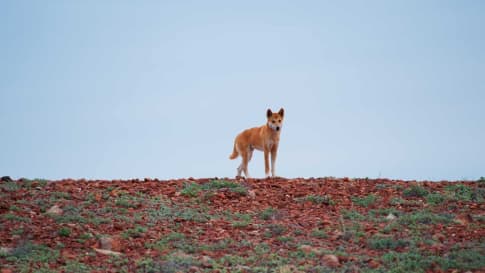
days
Apr, May, Jul, Aug, Oct +2Small group tour of Australia's Flinders ranges
Visiting South Australia
Escorted small group tour of the Flinders range in South Australia from Adelaide. Learn about Coober Pedy, Wilpena pound and water system of Lake Eyre as we explore and learn also about the history of the people who explored the Flinders.
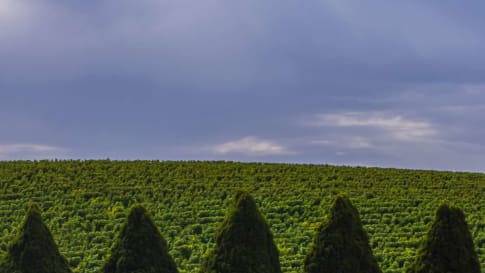
days
May, Aug, Sep, Oct, Nov +3Small group holidays to Adelaide and surrounds
Visiting South Australia
Explore and learn about on a small group tour of Adelaide city and its pastoral, cultural and historic settlement. Visit Fleurieu Peninsula, the Barossa valley, learn about William Morris and the arts and craft movement in the Art gallery and National trust houses.

9 days
Mar, Nov, OctSmall group tour of Flinders Island
Visiting Tasmania
Explore and learn about Flinders Island on an escorted small group tour for mature and senior travellers who enjoy a walking holiday. For couples or solo travellers. We also explore Cradle Mountain and Launceston.
From A$6,950 AUD
View Tour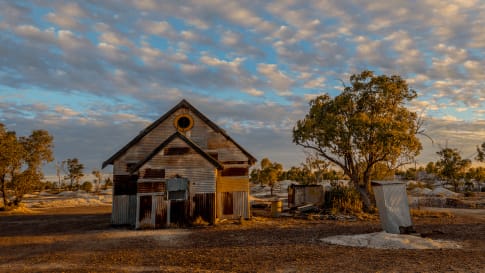
days
Mar, Apr, May, Jul, Aug +2Small group tour of outback Queensland
Visiting New South Wales, Queensland
To Dubbo and back, this small group tour takes you to learn about the Brewarrina fish traps, we travel high up into North Queensland to see the Dinosaurs of Winton and incredible Aboriginal rock art at Cathedral gorge and learn about opal mining and the history of Lightning ridge.

days
Mar, May, Aug, Oct, Jan +1Small group tour of Victoria for Senior travellers
Visiting Victoria
This 16 day escorted small group tour of Victoria for the senior or mature traveller who enjoys learning whether as a couple or solo traveller explores an area of central Victoria that is rich in historic houses, gorgeous gardens and some amazing art.
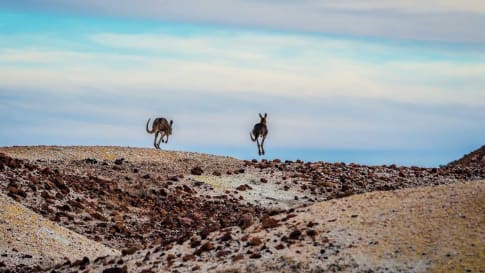
13 days
Mar, OctSmall group tour; Broken Hill and back
Visiting New South Wales, Queensland
Small group tour of New South Wales, Queensland & South Australia deserts, from Broken Hill. Learn about the history of the people who explored the deserts, from indigenous communities to Europeans, as well as Burke and Wills, visit White Cliffs, Birdsville, Maree.
From A$11,550 AUD
View Tour
days
Mar, Aug, Sep, Oct, Nov +3Tours of Tasmania; exploring colonial history
Visiting Tasmania
Escorted program for couples and single travellers visiting Hobart, Launceston through the Tamar Valley along the rugged coastline of the north coast and heading back south to the pristine wilderness around Cradle Mountain and then on through Strahan, Queenstown and past Lake St Clair, before arriving back in Hobart. This 18 day small group tours to Tasmania for mature and senior travellers interested in the colonial history of Tasmania. We follow the footsteps of the colonists, visiting the churches where they worshipped, the houses in which they lived, the taverns where they drank and some of the mills in which they worked.
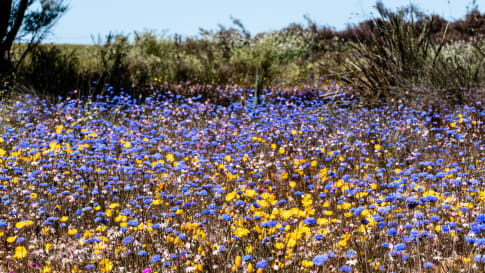
15 days
Aug, SepWildflowers tour of Western Australia
Visiting Western Australia
Escorted small group tour for senior and mature travellers as a couple of solo traveller. Upto 12 people of WA's Wildflower regions including Esperance and the Fitzgerald river National park. Local guides and program leader share knowledge about this fascinating region whilst in bloom.
From A$12,250 AUD
View Tour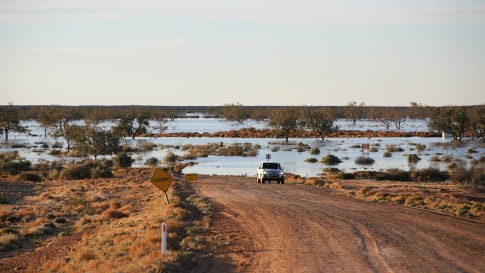
65 days
MarLong tour of Australia for a small group
Visiting New South Wales, Northern Territory
Small group tour for senior couples and solo travellers touring Australia. Travelling through the outback and visiting many of the famous sights as well as off the beaten track locations. Learn about the history of the people who explored the deserts, from indigenous communities to Europeans, as well as Burke and Wills, visit White Cliffs, Marree and far north Kakadu and the Kimberley.
From A$48,995 AUD
View TourArticles

Aboriginal culture of the Flinders Ranges, South Australia
The iconic Flinders Ranges of South Australia have a rich Aboriginal heritage and are home to a number of vitally important cultural sites and ancient artworks that this small group tour for mature and senior travellers has the opportunity its to learn about.

Aboriginal land use in the Mallee
Learning about the Mallee for a escorted small group tour of South Australia and Western Australia for mature and senior travellers. Understand the Mallee & Wildflowers relationship and the indigenous community land use.

Aboriginal Sites of Importance in Outback Queensland, Australia
Outback Queensland is hiding a number of unforgettable indigenous experiences on this small group tour for senior travellers. Especially at the Brewarrina Fish Traps, and Carnarvon Gorge, for example where you can experience and learn about dreamtime creation stories, age-old cultural practices and traditions, and Aboriginal art.

Aboriginal Art
Senior and mature couples and solo travellers remain curious but often informed about the role Aboriginal art plays in the indigenous community and the various styles. This article seeks to provide a platform for this collection of small group tours of upto 15 people into the Australian outback where often Aboriginal art styles are encountered.

Aboriginal history and culture of Kakadu National Park, Northern Territory
For those seek to learn as they travel then the history of the Aboriginal journey and timelines that unfold as a discovery in Australia seek to fascinate the mature and senior traveller on a small group package tour for couples and singles. From Darwin, this tour also visits Arnhem land as well as Kakadu, during the dry season.

Aboriginal Rock Art in the Kimberley, Australia
The Kimberley is explored on a small group tour for mature and senior travelers, couples or singles. Both Aboriginal community is studied and an appreciation of the wet and dry seasons. This guide on the Kimberley assists the traveler as you start from Broome and travel round via Halls creek and Purnunulu national park over some 17 days in a group of up to 12 people.

Ancient Aboriginal trade routes of Australia
Ancient Aboriginal trade routes of Australia Trade was a central part of life for Aboriginal people prior to the British settlement of Australia. Trading routes criss-crossed the nation, dispersing goods, information, technologies and culture thousands…
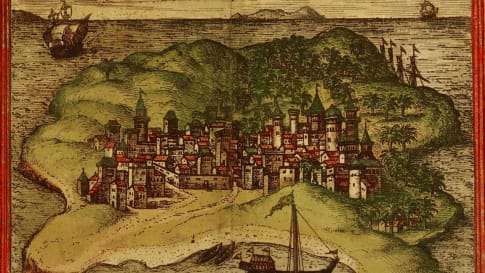
Archaeological mysteries of Australia: How did a 12th century African coin reach Arnhem Land?
Consider the impact of Portuguese, Spanish and Chinese followed by the Dutch trading in the Spice islands to the North of Australia from the 11th century. The probability of African coins reaching a beach become real. Learn more on a small group package tour to Kakadu and Arnhem land or the Kimberley where shipwrecks have been found to consider the impact on Aboriginal history and rock art. Tours for seniors couples and singles.

Budj Bim Cultural Landscape, Victoria
Article for escorted small group tour about this program visiting UNESCO World Heritage sites in Victoria, South Australia & NSW. Exploring and learn about Budj Bim cultural landscape for mature and senior travellers .
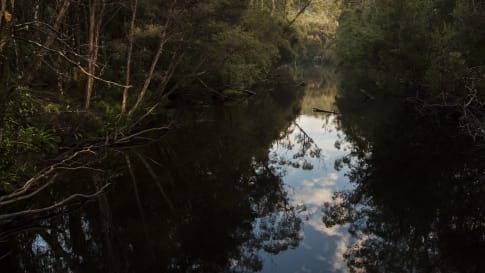
Ice age archaeological sites of the Tasmanian Wilderness World Heritage Area, Australia
Ice age archaeological sites of the Tasmanian Wilderness World Heritage Area, Australia The Franklin-Gordon Wild Rivers National Park is one of the most remote places in Australia, a wild labyrinth of winding gorges, rushing rapids,…

Madjedbebe Archaeological Site, Northern Territory
Madjedbebe Archaeological Site, Northern Territory Near the border of western Arnhem Land and Kakadu National Park in Australia’s ‘top end’, Madjedbebe rock shelter (formerly known as Malakunanja II) is the oldest archaeological site in Australia,…
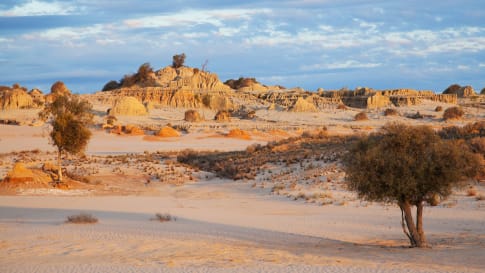
Mungo Man and Mungo Lady, New South Wales
Part of a small group tour of World heritage sites on Victoria, NSW & South Australia for mature and senior travellers. Learn and explore in the Mungo National park about Aboriginal settlement and the fauna and flora of this National park.

The Arrival of Aboriginal Australians on the Continent
Tracing Aboriginal history via an outback small group tour for mature and senior couples or solo travellers provides an intriguing learning platform about Australia, rock art, trading and culture that traces a history possibly some 120,000 years ago.

Understanding Aboriginal aquaculture
Aboriginal communities had the ability to harvest fish some 20,000+ years ago. Creating major centres of trade and cultural exchange, and supported permanent communities. Discover and learn more on a escorted small group package tour to Victoria, South Australia & Queensland for mature and senior travellers, couples and solo travellers interested in learning.
